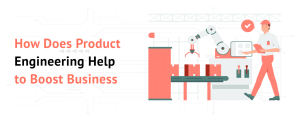Product Engineering is the process of creating, developing, and improving products. It involves designing, testing, and launching products that meet customer needs. Effective product engineering ensures that a company remains competitive and continues to grow in the market. This guide explores various ways businesses can enhance their process to achieve success.
Understanding Customer Needs
The first step in success is understanding what customers want. Businesses should conduct market research, customer surveys, and analyze feedback. This helps in identifying problems that need solutions and ensuring that the final product meets customer expectations. Understanding customer needs helps in making informed design and development decisions.
Focusing on Innovation
Innovation is essential in product engineering. Companies should invest in new technologies and creative ideas to develop unique and high-quality products. By staying ahead of industry trends, businesses can offer innovative solutions that attract and retain customers. Research and development (R&D) plays a crucial role in fostering innovation, ensuring that businesses introduce products that are efficient, user-friendly, and competitive.
Building a Strong Team
A skilled team is necessary for successful product engineering. Businesses should hire professionals who specialize in various aspects, including product design, development, and testing. A strong team can efficiently tackle challenges and develop products that meet high standards. Encouraging teamwork and collaboration among engineers, designers, and marketers ensures smooth product development.
Using the Right Technology
Following a Structured Process
Research and Planning:
Understanding customer needs and market trends.
Design and Prototyping:
Creating initial product designs and testing prototypes.
Development and Testing:
Building the final product and conducting tests for quality assurance.
Launch and Feedback:
Introducing the product to the market and gathering feedback for future improvements.
Following a structured process ensures smooth product development, reducing risks and increasing efficiency.
Prioritizing Quality Assurance
Quality assurance plays a crucial role in product engineering. Businesses should perform rigorous testing to identify and correct defects before launching a product. High-quality products enhance customer satisfaction and trust. Companies should implement quality control measures at every stage of development to ensure consistency and reliability.
Adopting Agile Methodology
Agile methodology helps businesses improve their product engineering by promoting flexibility, collaboration, and continuous improvement. Agile development allows teams to work on small, manageable parts of a project and make changes based on customer feedback. This results in faster development, better product quality, and higher adaptability to market changes.
Reducing Costs and Improving Efficiency
Efficient it helps businesses save costs while maintaining quality. Companies should optimize resource usage, minimize waste, and automate repetitive tasks. Implementing lean manufacturing techniques can help reduce unnecessary expenses and improve productivity. Cost-effective engineering ensures businesses remain profitable while delivering excellent products.
Ensuring Scalability and Sustainability
Products should be designed to scale with business growth. Scalability ensures that products can accommodate increasing customer demand without compromising performance. Additionally, sustainability is becoming increasingly important. Companies should adopt eco-friendly practices, such as using recyclable materials and energy-efficient production methods. Sustainability benefits both the environment and the company’s reputation.
Gathering and Analyzing Data
Data analysis helps businesses make informed decisions during product development. Tracking customer behavior, market trends, and product performance provides valuable insights for improvement. Businesses should use analytics tools to evaluate customer feedback, identify patterns, and enhance future products. Data-driven decision-making leads to better product design and customer satisfaction.
Conclusion
Helping product engineering in business requires a strategic approach that includes understanding customer needs, leveraging technology, following a structured development process, and ensuring quality. By continuously improving product engineering practices, businesses can develop high-quality, cost-effective, and innovative products. This, in turn, leads to business growth, customer satisfaction, and a competitive edge in the market.





